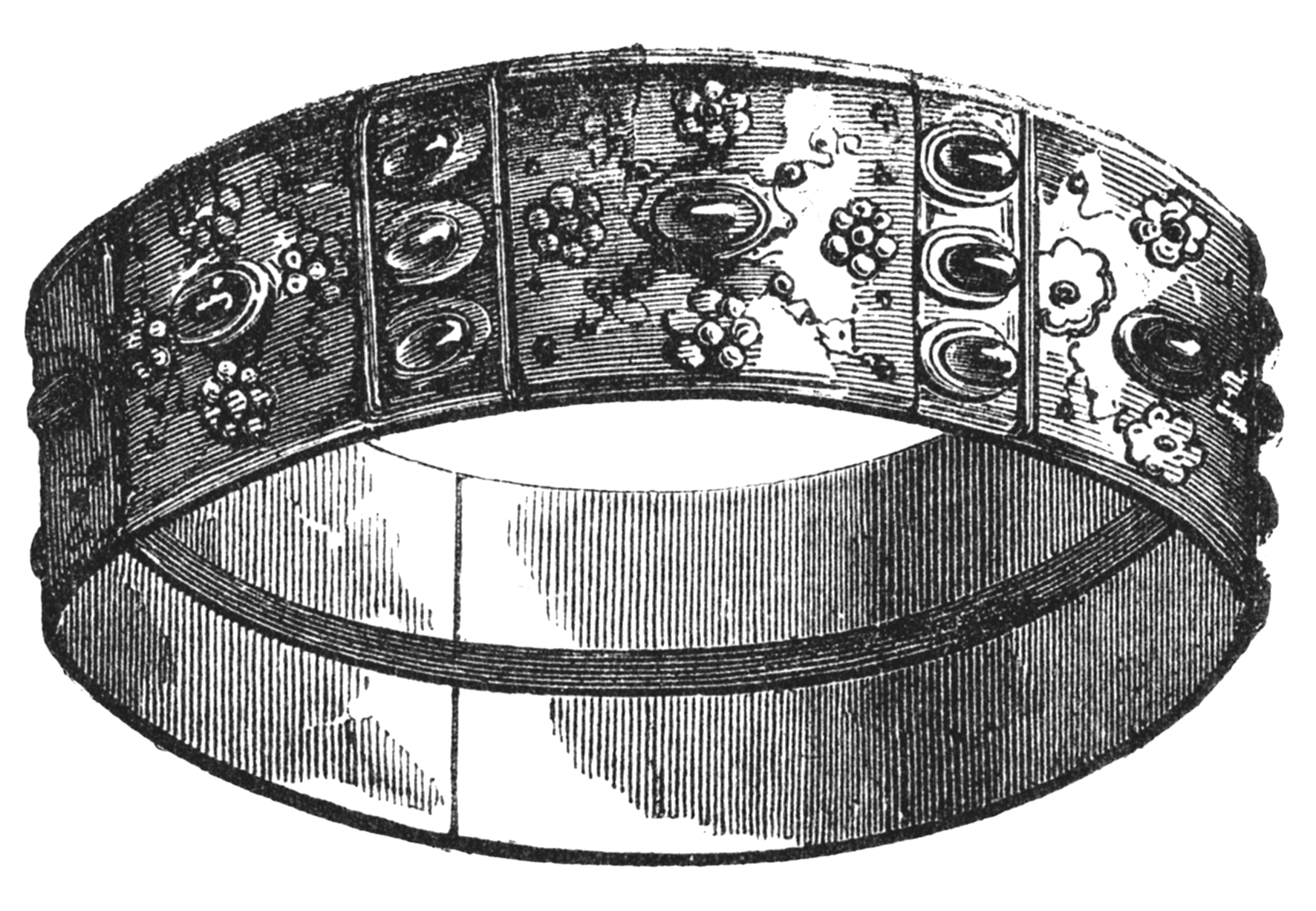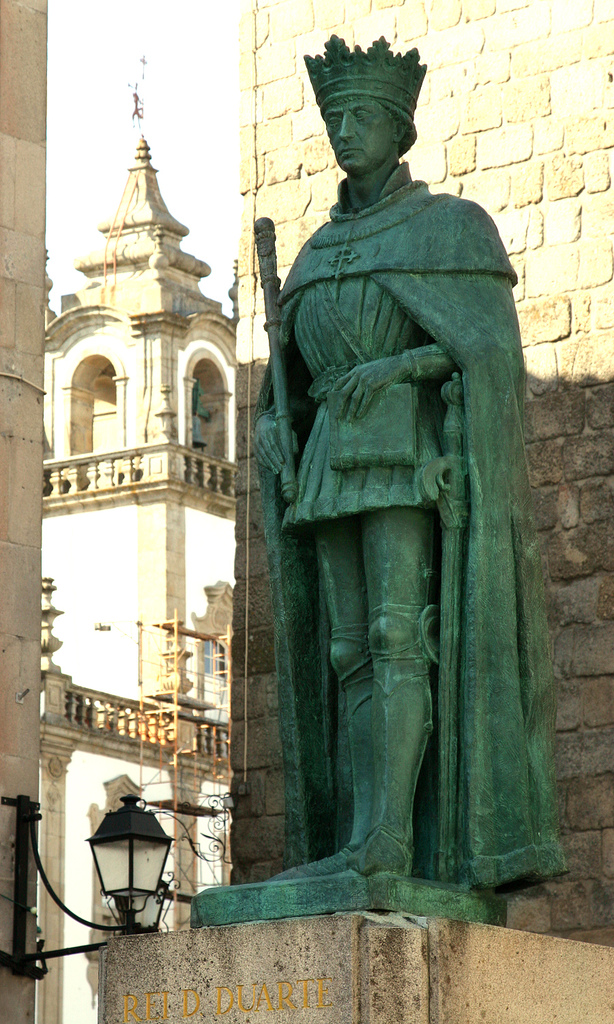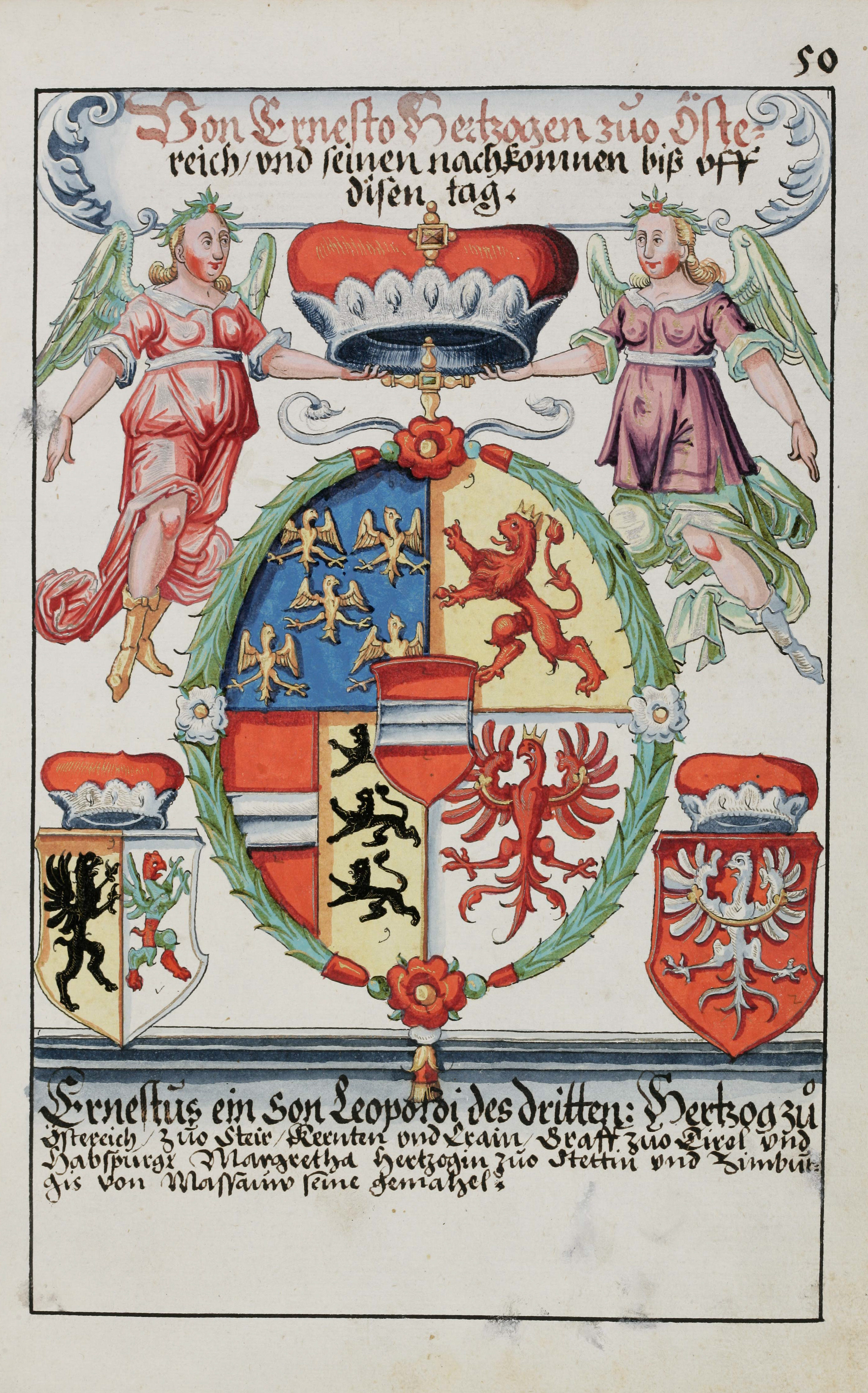|
Sabina Of Bavaria, Duchess Of Württemberg
Sabina of Bavaria-Munich (24 April 1492 – 30 August 1564) was Duchess consort of Württemberg by marriage to Ulrich, Duke of Württemberg. Biography Family Sabina was the daughter of Albert IV, Duke of Bavaria and his wife Kunigunde of Austria, daughter of Frederick III, Holy Roman Emperor and Eleanor of Portugal. Duchess consort Sabina was promised at the age of six years for strategic reasons by her uncle, King Maximilian I, to Ulrich of Württemberg to whom she was married 15 years later. This marriage was unhappy because of Ulrich's tendency to violence, so that Sabina was ultimately forced to flee from Württemberg without her two children and seek shelter with her brothers in Munich. When, in 1551, her son, Christoph, inherited the throne of Württemberg, Sabina moved to Nürtingen, which was then the official widow's residence of the Württembergs. There she led a small court and being an educated woman turned it into a meeting place for Württemberg's Protesta ... [...More Info...] [...Related Items...] OR: [Wikipedia] [Google] [Baidu] |
List Of Württembergish Royal Consorts
The Queen of Württemberg was the queen consort of the ruler of the Kingdom of Württemberg, from its establishment in 1806 to its abolition in 1918. Salic law required all rulers of Württemberg to be male and so there was never a queen regnant of Württemberg. Duchess consort of Württemberg, 1495–1803 Electress consort of Württemberg, 1803–1806 Queen consort of Württemberg, 1806–1918 {{DEFAULTSORT:List of consorts of Wurttemberg Consorts of Württemberg, Lists of countesses, Wurttemberg, Countess of Lists of duchesses, Wurttemberg, Duchess of Lists of queens, Wurttemberg, Queen of People from the Kingdom of Württemberg Lists of German nobility Lists of royal consorts, Württemberg ... [...More Info...] [...Related Items...] OR: [Wikipedia] [Google] [Baidu] |
Protestantism
Protestantism is a branch of Christianity that emphasizes Justification (theology), justification of sinners Sola fide, through faith alone, the teaching that Salvation in Christianity, salvation comes by unmerited Grace in Christianity, divine grace, the priesthood of all believers, and the Bible as the sole infallible source of authority for Christian faith and practice. The five solae, five ''solae'' summarize the basic theological beliefs of mainstream Protestantism. Protestants follow the theological tenets of the Reformation, Protestant Reformation, a movement that began in the 16th century with the goal of reforming the Catholic Church from perceived Criticism of the Catholic Church, errors, abuses, and discrepancies. The Reformation began in the Holy Roman Empire in 1517, when Martin Luther published his ''Ninety-five Theses'' as a reaction against abuses in the sale of indulgences by the Catholic Church, which purported to offer the remission of the Purgatory, temporal ... [...More Info...] [...Related Items...] OR: [Wikipedia] [Google] [Baidu] |
House Of Württemberg
The House of Württemberg is an uradel, ancient German nobility, German dynasty and former royal family of the Kingdom of Württemberg. History County The House probably originated in the vicinity of the Salian dynasty. Around 1080 the ancestors of modern Württemberg, which was then called "Wirtemberg", settled in the Stuttgart area. Conrad I, Count of Württemberg, Conrad of Württemberg became heir to the House of Beutelsbach and built the Wirtemberg Castle. Around 1089, he was made Count. Their domains, initially only the immediate surroundings of the castle included, increased steadily, mainly through acquisitions such as those from impoverished homes of Tübingen. Duchy At the Diet of Worms in 1495, Eberhard I, Duke of Württemberg, Count Eberhard V was raised to Duke (''Herzog'') by the List of German monarchs, German King, later Holy Roman Emperor, Maximilian I, Holy Roman Emperor, Maximilian I. During 1534 to 1537 Ulrich, Duke of Württemberg, Duke Ulrich introduced the ... [...More Info...] [...Related Items...] OR: [Wikipedia] [Google] [Baidu] |
Duchesses Of Bavaria
There have been three kinds of Bavarian consorts in history: duchesses, electresses and queens. Most consorts listed are duchesses. The first ever consort of Bavaria was Waldrada in the 6th century. The final consort was Maria Theresa of Austria-Este (1849–1919), Maria Theresia of Austria-Este in 1913. The longest serving house was the Wittelsbach dynasty, who played a major role in Bavarian history. During the medieval period under the Wittelsbach dynasty, Bavaria was split into two parts, Upper and Lower Bavaria. This meant that there may have been more than one Duchess of Bavaria at the same time, due to messy inheritance among heirs. Three of the break-away Wittelsbach families were: Landshut, Munich and Ingolstadt. Since 555 there have been 99 Bavarian consorts: 78 duchesses, 11 queens, 10 electresses and one margravine. The number does not add up because Elizabeth of Lorraine and Caroline of Baden, held two titles. There were a few consorts that married twice, usually t ... [...More Info...] [...Related Items...] OR: [Wikipedia] [Google] [Baidu] |
1564 Deaths
Year 1564 ( MDLXIV) was a leap year starting on Saturday of the Julian calendar. Events January–March * January 26 – Livonian War – Battle of Ula: A Lithuanian surprise attack results in a decisive defeat of the numerically superior Russian forces. * February 7 (11th waning of Tabodwe 925 ME) – Burmese–Siamese War: Invaders from Burma overcome the seaside defenses of the Siamese capital at Ayutthava, capturing the batteries of cannons and a set of ships sent by Portugal to help defend the kingdom.G. E. Harvey, ''History of Burma: From the Earliest Times to 10 March 1824'' (Frank Cass & Co. Ltd., 1925) pp.167-168 * February 18 (8th waxing of Tabaung 925 ME) – The Burmese–Siamese War ends with the surrender of King Maha Chakkraphat of Ayutthaya (now Thailand) to King Bayinnaung of Burma). Chhakkraphat is allowed to go into exile and his son Mahinthrathirat is installed by Bayinnaung as the vassal king of Ayutthaya. * February 19 – ... [...More Info...] [...Related Items...] OR: [Wikipedia] [Google] [Baidu] |
1492 Births
Year 1492 ( MCDXCII) was a leap year starting on Sunday of the Julian calendar. 1492 is considered to be a significant year in the history of the West, Europe, Christianity, Islam, Judaism, Spain, and the New World, among others, because of the number of significant events that took place. The events which propelled the year into Western consciousness, listed below, include the completion of the Reconquista of Spain, Europe's (Spain) discovery of the New World, and the expulsion of Jews from Spain. Events Known dates * January 2 – Fall of Granada: Muhammad XII, the last Emir of Granada, surrenders his city to the army of the Catholic Monarchs (Ferdinand II of Aragon and Isabella I of Castile) after a lengthy siege, ending the ten-year Granada War and the centuries-long Reconquista, and bringing an end to 780 years of Muslim control in Al-Andalus. * January 6 – Ferdinand and Isabella enter Granada. * January 15 – Christopher Columbus meets Ferdinand a ... [...More Info...] [...Related Items...] OR: [Wikipedia] [Google] [Baidu] |
Leonor Of Aragon (1402-1445)
Eleanor of Aragon (2 May 1402 – 19 February 1445) was List of Portuguese royal consorts, Queen of Portugal from 1433 to 1438 as the spouse of Edward, King of Portugal, King Edward. After Edward's death, she served as regent in 1438-1440 for her son Afonso V of Portugal, Afonso V. She was the daughter of Ferdinand I of Aragon and Eleanor of Alburquerque. Biography Eleanor's brother, Alfonso V of Aragon, arranged her marriage to the future King Edward of Portugal, which happened on 22 September 1428. They had nine children, of whom five survived to adulthood. In 1433, she became Queen of Portugal. When her husband died on 9 September 1438, Eleanor was appointed regent of Portugal in his will, which was supported by the Portuguese Cortes. However, as a woman and a foreigner, she was unpopular with the people, who preferred the late king's brother Infante Peter, Duke of Coimbra. Her appointment as regent therefore caused a riot in Lisbon. The riot was suppressed by her brother ... [...More Info...] [...Related Items...] OR: [Wikipedia] [Google] [Baidu] |
Edward Of Portugal
Edward ( ; 31 October 1391 – 9 September 1438), also called Edward the Philosopher King (''Duarte o Rei-Filósofo'') or the Eloquent (''o Eloquente''), was the King of Portugal from 1433 until his death. He was born in Viseu, the son of John I of Portugal and his wife, Philippa of Lancaster. Edward was the oldest member of the " Illustrious Generation" of royal children who contributed to the development of Portuguese civilization during the 15th century. Early life Edward was the second born male legitimate son of King John I. He became the heir to the throne after his brother Afonso died in 1400, aged 10. Before he ascended to the throne, Edward always followed his father in the affairs of the kingdom. He was knighted in 1415 after the Portuguese capture of the city of Ceuta in North Africa, across from Gibraltar. He became king in 1433, when his father died of the plague. As king, Edward soon showed interest in building internal political consensus. During his short reign ... [...More Info...] [...Related Items...] OR: [Wikipedia] [Google] [Baidu] |
Cymburgis Of Masovia
Cymburgis of Masovia (; ; 1394 or 1397 – 28 September 1429), also spelled Zimburgis or Cimburga, was a Duchy of Masovia, Princess of Masovia of the Polish Piast dynasty and a List of Austrian consorts, Duchess of Austria from 1412 until 1424, by her marriage with the House of Habsburg, Habsburg duke Ernest, Duke of Austria, Ernest the Iron. As the mother of later Emperor Frederick III, Holy Roman Emperor, Frederick III, Cymburgis, after Gertrude of Hohenberg, became the second female ancestor of all later Habsburgs, as only her husband's Ernestine branch of the family survived in the male line. Life She was the second daughter of Duke Siemowit IV, Duke of Masovia, Siemowit IV, a scion of the Duke of Masovia, Masovian branch of the Piasts, and his consort Alexandra of Lithuania, Alexandra, a daughter of Grand Duke Algirdas, Algirdas of Lithuania from the dynasty of Gediminids and sister of King Władysław II Jagiełło, Władysław II Jagiełło of Poland. Though his elder broth ... [...More Info...] [...Related Items...] OR: [Wikipedia] [Google] [Baidu] |
Ernest, Duke Of Austria
Ernest the Iron-Willed (; 1377 – 10 June 1424), a member of the House of Habsburg, ruled over the Inner Austrian duchies of Styria, Carinthia and Carniola from 1406 until his death. He was head of the Habsburg Leopoldian line from 1411. Biography Ernest was born in Bruck an der Mur in Styria, the third son of Duke Leopold III of Austria (1351–1386) and his consort Viridis Visconti (d. 1414), a daughter of Bernabò Visconti, Lord of Milan. Shortly after his birth, his father and his uncle Albert III divided the Habsburg lands by the 1379 Treaty of Neuberg: while Albert and his Albertinian descendants would rule over the Duchy of Austria proper, the Leopoldian line received the Inner Austrian states of Styria, Carinthia and Carniola with the remaining March of Istria, as well as Tyrol and the Further Austrian possessions. After Leopold's death in the 1386 Battle of Sempach, young Ernest and his brothers William, Leopold IV and Frederick IV remained under the guar ... [...More Info...] [...Related Items...] OR: [Wikipedia] [Google] [Baidu] |
Eric I, Duke Of Brunswick-Grubenhagen
Eric I, Duke of Brunswick-Grubenhagen nicknamed ''the winner'' (; – 28 May 1427), ruled the Principality of Grubenhagen, a part of the Duchy of Brunswick-Lüneburg. Life Eric was the only son of the Duke Albert I of Brunswick-Grubenhagen, who died in 1383, and his wife Agnes I, a daughter of Duke Magnus II of Brunswick-Lüneburg. Eric inherited Brunswick-Grubenhagen at a very early age; he stood until 1401 under the guardianship of his uncle, Duke Frederick of Grubenhagen-Osterode. From 1402 they joined ruled the principality and Eric moved his residence to Salzderhelden. Disputes arose with his cousins Bernard I and Frederick I of Lüneburg, with the city of Brunswick, with his former guardian, with the counts of Schwarzburg and the Landgrave of Thuringia. All these disputes were soon settled again. In 1406 Eric was captured in a feud with the Lords of Hardenberg in Lindau. He was only released after he gave them a written and the city of Osterode am Harz as ... [...More Info...] [...Related Items...] OR: [Wikipedia] [Google] [Baidu] |
Anna Of Brunswick-Grubenhagen-Einbeck
Anna of Brunswick-Grubenhagen-Einbeck (1414 – 4 April 1474) was a daughter of Duke Eric I of Brunswick-Grubenhagen and his wife, Elisabeth of Brunswick-Göttingen, daughter of Otto I, Duke of Brunswick-Göttingen. Anna's first marriage was with Duke Albert III of Bavaria. They had the following children: * John IV (1437–1463), Duke of Bavaria * Ernest (1438–1460) * Sigismund of Bavaria (1439–1501) * Albert (1440–1445) * Margaretha (1442–1479), married in 1463 with Marquess Frederick I of Mantua * Elisabeth (1443–1484), married in 1460 with Elector Ernest of Saxony (1441–1486) * Albert IV (1447–1508) * Christopher (1449–1493) * Wolfgang (1451–1514) * Barbara, a nun in Munich Munich is the capital and most populous city of Bavaria, Germany. As of 30 November 2024, its population was 1,604,384, making it the third-largest city in Germany after Berlin and Hamburg. Munich is the largest city in Germany that is no ... After Albert's death, she m ... [...More Info...] [...Related Items...] OR: [Wikipedia] [Google] [Baidu] |







